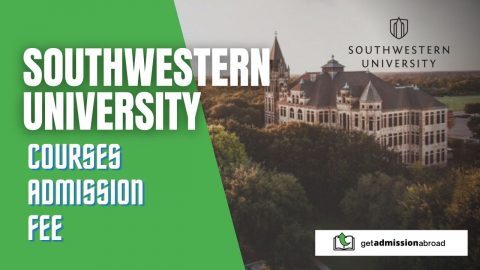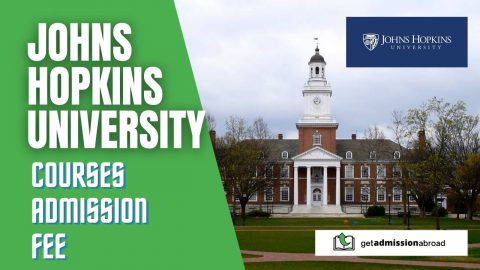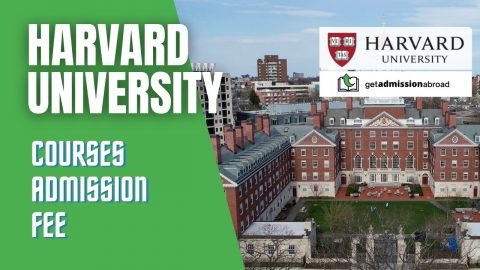Columbia University is one of the most significant centers for study in the world and, at the same time, a remarkable and respected educational atmosphere for undergraduates and graduate students in a variety of analytical and professional fields. The University recognizes the importance of its position in a broad apple town and aims to tie its research and teaching to the vast resources of an excellent metropolis. This aims to participate in a range of foreign colleges and student bodies, to encourage research and teaching on world issues, and to establish tutorial ties with a number of countries and regions. This wants all aspects of the University to promote knowledge and training at the highest level and to communicate the outcomes of its activities to the globe.
History
Columbia University was based in 1754 as King’s school by charter of King George II of England. it’s the oldest establishment of higher learning within the state of recent York and therefore the fifth oldest in the united states.
Controversy followed the induction of the faculty, with different teams trying to figure out its location and non-secular association. The supporters of the recent York City worked effectively for the primary purpose, while the Anglicans won over the latter. Nevertheless, all the electoral districts joined in their devotion to the values of religious liberty in the creation of the faculty’s policies.
In July 1754, Samuel Johnson was in charge of the key classes in an incredibly new building next to the Trinity Church and settled down on the lower street of Manhattan. There were eight participants in the class. At King’s College, long-standing members of the colonial community might receive an education intended to “enlarge the intellect, develop knowledge, polish the whole individual, and prepare them to help the best characters in all the elevated stations of existence.” One of the early examples of the institution’s ambitious aims was to establish the first American medical school in 1767.
Columbia University Ranking
Columbia University is hierarchic #3 in National Universities. colleges are hierarchic in keeping with their performance across a collection of widely accepted indicators of excellence.
- #3 National Universities (tie)
- #76 Best undergraduate Teaching (tie)
- #6 Best value schools
Fee Structure
| Courses | Duration | 1st Year Tuition Fees |
| MBA(4 Courses) | 12 – 24 Months | INR 43.1L – 87.2L |
| MS(9 Courses) | 12 – 24 Months | INR 23.9L – 50.1L |
| BSc(2 Courses) | 4 Years | INR 39.2L |
| BE/Btech(6 Courses) | 4 Years | INR 39.2L |
| Other Courses(1 Course) | 5 Years | INR 30.4L |
Courses in Columbia University
This section contains an outline of the course of study of every department within the faculty, beside info concerning degree necessities for majors and concentrates, as well as course descriptions, application info, elective courses you can choose, and exclusive suggestions regarding courses and programs in connected fields.
Columbia University students should use the School Bulletin for educational planning purposes, as not all of the classes mentioned in the University-wide Directory of Classes and Vergil are Hospitable Columbia University programs.
The College reserves the right, at any point, to withhold or change courses of instruction or to modify teachers.
- African American and African Diaspora Studies
- American Studies
- Ancient Studies
- Anthropology
- Archaeology
- Architecture
- Art History and Archaeology
- Astronomy
- Biological Sciences
- Business
- Chemistry
- Classics
- Comparative Literature and Society
- Computer Science
- Creative Writing
- Dance
- Drama and Theatre Arts
- Earth and Environmental Sciences
- East Asian Languages and Cultures
- Ecology, Evolution, and Environmental Biology
- Economics
- Education
- English and Comparative Literature
- Ethnicity and Race Studies
- Film and Media Studies
- French and Romance Philology
- Germanic Languages
- History
- History and Philosophy of Science
- Human Rights
- Italian
- Jazz Studies
- Jewish Studies
- Language Resource Center
- Latin American and Caribbean Studies
- Latin American and Iberian Cultures
- Linguistics
- Mathematics
- Medieval and Renaissance Studies
- Music
- Philosophy
- Physical Education and Intercollegiate Athletics
- Physics
- Political Science
- Psychology
- Public Health
- Regional Studies
- Religion
- Slavic Languages
- Sociology
- Statistics
- Sustainable Development
- Urban Studies
- Visual Arts
- Women’s and Gender Studies
Required Documents in Columbia University
Individual graduate programs might require totally different parts. Make sure to examine the program website for specific needs.
- on-line application and application fee
- Transcripts from all past post-secondary study. (Domestic and international student needs might differ)
- Letters of reference
- English proficiency examination scores (if required)
- GRE or different test scores (if required)
- criminal record check (if required)
- Statement of interest (if required)
- Finding a research supervisor (if required)
- Permanent Residents of North American nation should offer a clear photocopy of either side of the Permanent Resident card.
- Please conjointly see the “Required Documentation” section associated with master’s and degree admissions within the UBC tutorial Calendar
Admission Eligibility Criteria in Columbia University:
Following are the eligibility criteria for admission in Columbia University:
| Courses | Exams | ||
| MBA(4 Courses) | GMAT: Accepted | GRE: Accepted | IELTS: 7 & Above |
| MS(9 Courses) | GRE: Accepted | IELTS: Accepted | TOEFL: Accepted |
| BSc(2 Courses) | IELTS: 7 & Above | TOEFL: 100 & Above | |
| BE/BTech(6 Courses) | IELTS: 7 & Above | TOEFL: 100 & Above | |
| Other Courses(1 Course) | GRE: Accepted | IELTS: Accepted | TOEFL: Accepted |
The Environment Of The College:
The student-faculty ratio at university is 6:1, and therefore the faculty has 82.1 % of its categories with fewer than twenty students. The foremost widespread majors at university include: Social Sciences; Engineering; computer and information Sciences and Support Services; Biological and medicine Sciences; and psychological science. the typical freshman retention rate, associate degree indicator of student satisfaction, is 99 %.
What is the entrance gateway?
Columbia University is the third largest America University to welcome international students. In 2018, around 2,260 students were admitted to Columbia University and Engineering, fall batch, out of that 1,423 students listed within the course with a yield rate of 63. The university grants degrees in humanities and social sciences departments with over 60 majors. Around 84 of scholars get admitted to the MD/Ph.D. program each year. Concerning one year of international students started learning in 2018 with most students being from China, India, South Korea, and France.
- The Columbia University has 3 undergraduate faculties, 13 graduate & skilled faculties, a world-renowned heart and four related faculties.
- UG students got to either use the Common Application portal or Coalition Application portal for applying, whereas graduate candidates have a separate form for every program.
- For taking admission in law degree (Graduate faculty of Law) and MDE/Ph.D. (School of Nursing), the candidates got to seem for TOEFL under English take a look at. No other Language test score can serve for it.
- Application fee must be paid via Visa or MasterCard or Discover or American express MasterCard solely.
Advantages in Columbia University
Student Feedback
As graduates at Columbia, we have earned the Columbia ID, which comes with many advantages. Thanks to the student ID, we have access to the many facilities at Columbia University, including the 22 libraries, the dining rooms, the 3-floor sports center, the swimming pool, etc. Because I am very attached to culture, I love getting to know the cities I visit. To order to better understand the past of a city and its residents, one should explore its neighborhoods by cycling, but also by visiting museums. Throughout France, student IDs comes with benefits such as a cut or free entrance to museums. I thought it was going to be the same in New York, particularly with a college like Columbia. When I arrived, I immediately got some information about the ID and its advantages.
In fact, as in France, you can put money on your card to pay for items like printing. This money can also be used in shops around Columbia, which do not offer any tax fees. The downside of the Columbia ID is that you get $2 for free printing every week (that’s 20 pages!).
One of the most interesting things in my opinion is access to some Broadway shows and operas at a discounted price thanks to the Arts initiative. A buddy and I bought tickets for two famous productions on display at the Metropolitan Opera: one for Don Giovanni (in November) and one for Aida (in December).
Hostel life in Columbia University
In 2017, the student population at Columbia University was 32,429 (8,868 undergraduate students and 23,561 undergraduate students), with 42% of the student population identifying as a minority and 28% born outside the United States. Twenty-six percent of students in Columbia have family incomes below $60,000, rendering it one of the most socio-economically diverse. Seventeen percent of students in Columbia receive federal Pell grants, many of which go to students with a family income of less than $40,000. Seventeen percent of students are the first family member to join a four-year class.
Accommodation on campus is promised as a student for all four years. Columbia College and the Fu Foundation School of Engineering and Applied Science (also known as SEAS or Columbia Technology) share campus residence facilities. First-year students usually sleep in one of the main residences in South Lawn: Carman Hall, Wallach Hall (originally Livingston Hall), Furnald Hall, John Jay Hall and Hartley Hall. Upper-classmen take part in a selection process in which students can choose to stay in a combination of corridor-or apartment-style accommodation with their mates. Columbia University School of General Studies, Barnard College and Graduate Schools have their own apartment-style accommodation in the surrounding area.
Columbia University is famous for its Greek fraternities, sororities and co-educational organizations. Approximately 10–15% of undergraduate students were affiliated with Greek life. Most Barnard women join the Columbia sororities as well. Since the founding in 1836 of the Delta chapter of Alpha Delta Phi, there has been a Greek community on campus. The Inter Greek Council is a self-governing student body offering guidance and support to its affiliate groups within each of the three councils at Columbia, the Inter fraternity Council, the Pan-Hellenic Council and the Greek Multicultural Council. The three members of the council put together their associated branches once a month to work as one Greek community. The sessions of the Inter Greek Council provide a forum for affiliate groups to learn from each other, collaborate together and lobby for community needs.
Experience of the Past Alumni
Students at Columbia University have learned how to be effective. It was a demanding world, and they found, within themselves, an ability that they had not previously considered, growing to meet their needs. It brought them faith in what they saw as a somewhat untraditional career path to follow and excel. Partnerships with practitioners and trainees from all over the world have become enduring friendships and creative professional partnerships.
Other Top Universities & Countries to Study Abroad
So how did you like the Columbia University? Are you planning to take an admission in the University? Check out the perks and cons of other Universities here.










